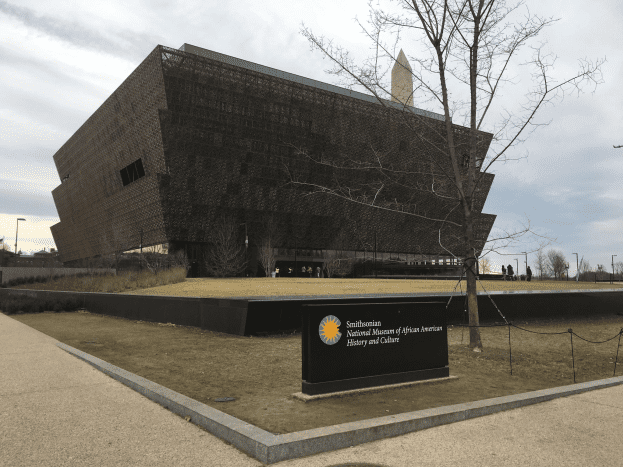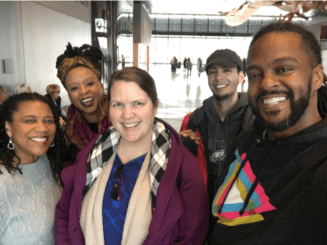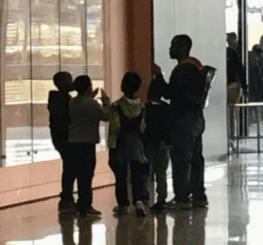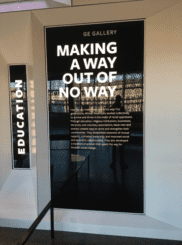
A team from Christians for Social Action recently visited the Smithsonian National Museum of African American History & Culture (NMAAHC on Twitter) in Washington, DC. Our purpose was the development of a one-day racial justice immersion experience for a variety of audiences—including students at our home base of Eastern University, church groups, and others in the CSA community. We plan to hold the first racial justice immersion experience this fall.
No one in our group had previously visited the museum, and we were amazed at the richness, accuracy, and voice of the presentation. The museum building is composed of a welcome gallery on the main floor, three floors below ground, and three floors above the welcome gallery for a total of seven floors.

The three subterranean floors flow together into one continuous timeline, stretching from trade between Africa and Europe in the 1500’s through to Barack Obama’s presidential inauguration in 2008. If that sounds like a lot to cover, indeed it is! However, the narrative is masterfully constructed with artifacts, historical insights, statues, interactive displays, quotes, and videos. We easily found ourselves spending an hour per floor as we made our best effort to take it all in.
I didn’t anticipate that who visits this museum would have just as profound an impact on me as what was in the museum. I was struck by not only the large numbers of black people present, but also the diversity of age and culture.

It was apparent that this experience was important for so many. I saw older black women in their Sunday best attire, and teens in skinny jeans and hoodies… both engaged and present in this shared moment. I was moved to tears as I saw a young woman explaining a slave revolt in an age-appropriate way to a very young child. I thought it was so important to have a space where we all could enter into our collective history together.
This presentation of history was unique in that it often used phrasing that is common to the cultures of black Americans. It felt surprisingly authentic and familiar to read stories and hear music that connects to me personally. It was refreshing to be centered as a black person, and not just a small feature within some other main attraction. This was also the most thorough and accurate presentation of history that I’ve seen anywhere.

The National African American Museum of History and Culture is an amazing experience that I think people of all ages and backgrounds should visit. Currently there is still a wait to get advance tickets, but day-of admission is possible—or stay tuned to their website to be notified of new blocks of (free) tickets opening up. We have to know our history, and it needs to be told from various voices and experiences. I’m looking forward to leading future groups to visit the museum and if you’d like to join CSA on an immersive tour, please let us know so that we can contact you about future opportunities.
Darren Calhoun is a community activist and photographer based out of Chicago, and one of CSA’s Associate Fellows for Racial Justice.


